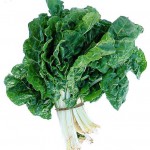"Once I've added some nice, beautiful, healthy whole foods into my diet, which foods should I squish out first?". This is a good question, so here are my recommendations:
Dieting? Try this instead
I’ve looked at countless ways to make dietary changes easier. Some tend to work really well and some don’t work at all. For the record, counting anything (calories or carbs) doesn’t work in the long run. Well, it might work at times, but it’s rarely a permanent change and only works if you possess an enormous pile of willpower.
RECIPE - Chocolate Bliss Balls
The terrible "Angry-Hungries"
Lessons from the Mediterranean
Brain Fuel for School
Should we consider our child’s diet as a tool for learning? Absolutely! Leading nutritional researchers are learning more every day about the power certain foods have on growing bodies. A healthy diet helps to build a better brain and a stronger immune system. As well, it can supply school-aged children with the focus needed to sit through math class, enjoy a good book, or have the energy to play a fun game after school.
Breakfast
This is a meal that can make or break your child’s day. A good breakfast will fuel your child’s energy and mind, but a high carb/high sugar breakfast may lead to energy lows and mood swings all day. Instead, start your child off right with a healthy, higher protein breakfast.
A good breakfast includes a good source of protein, whole grains, and is balanced nutritionally. Some examples of great breakfasts include: a poached egg on sprouted grain toast, 5% fat yogurt with homemade granola, and long-cook oatmeal with hemp seeds and berries.
Lunch
The best lunch for your child is always one you pack yourself. A sandwich made with sprouted grain bread, leftover meats, lettuce, and hummus makes a fantastic balanced lunch. Some carrot sticks or an apple rounds it out nicely. Juice packs and sugary drinks can cause an energy dip at the end of the school day. Pack water instead, or dilute 100% fruit juice with water.
After School Snack
Growing kids need more than 3 meals a day and an after-school snack is a must. This is also a great time to give them another serving of fruit or veggies that are a great source of vitamins and minerals to help support a healthy immune system. Vitamin C can help the body fight off colds and infections. Oranges, strawberries, and bell peppers are great sources of Vitamin C. Alternatively, a sugary snack after school may lead to problems sleeping, weaken his/her immune system, and make your child more prone to getting a cold.
Dinner
The best dinner for your child is one eaten with the family. This is a wonderful time to talk and come together as a group. It is also a great way to expand the palate of your picky eaters. It can take 8 – 10 introductions to a new food before your child begins to enjoy it, so be patient and keep trying. Prepare a healthy meal full of quality protein, a variety of colourful vegetables and whole grains, and he/she will get all of the nutrients requires for a strong body.
Overall, spend some time watching how your child reacts to different food choices. What meal choices keep his/her energy steady, mood balanced, and body strong? Provide a healthy variety of food for you and your family and you’ll child with have fewer sick days and better concentration through this school year.
Lisa Kilgour is a Registered Holistic Nutritionist. She provides one-on-one consultations and teaches workshops in the Okanagan. To find out the underlying cause of your symptoms, or to find the diet that helps you feel your best, visit www.EatMoreRealFood.com or call 250.869.9434.
Copyright © 2008- 2013 EatMoreRealFood.com. This article is of the copyright of EatMoreRealFood.com and the author; any reproduction, duplication and transmission of the article are to have prior written approval by EatMoreRealFood.com or the author.
Choose the Sun! (in a safe way)
Why We Don’t Eat What We “Should” Be Eating
I need to start with a spotlight on the word “should”…it’s a big pet peeve of mine. We’re constantly weighed down with what we “should” or “shouldn’t” be doing. We “should” all over ourselves! This is not helpful. The moment we use the word “should” we judge ourselves.
Look at these two sentences:
- I should be eating more vegetables.
- I could be eating more vegetables.
The latter is a statement, while the former has a big weight of judgment added to it. After a while, all of these “shoulds” we fill ourselves with start spilling out and we start to tell others what they “should” be doing.
“Should” doesn’t help us move forward, it holds us down. When it comes to diet we all know what we “should” be eating, but few of us do it. Let’s throw away the unhelpful word “should” and replace it with non-judgmental words like “could”, “can”, or even “will”.
Ahhhh, that feels better :). So, why don’t we eat the healthy diet that we could be eating?
Our daily diet is made up from a collection of decisions, and I feel that to get to the core of our dietary dilemmas we need to look at what drives these decisions. My hypothesis is that our state of mind when we are choosing what to eat drives what we choose to eat. Let me give you some examples:
Scenario 1: You come home from work and you’re STARVING! You could eat almost anything that’s put in front of you. You’re craving a fast hit of sugar or carbs, and you want it now. Your energy is low and the prospect of spending the next hour chopping, cooking, and waiting for dinner is very unappealing. So…what do you do? Make a big healthy meal, or just grab some chocolate from the cupboard? Or, do you just pick up something quick for dinner on your way home?
Scenario 2: You come home from work and you're feeling a bit hungry. You feel like you could eat in the next hour or two. Your energy is pretty good and you would really like to eat a big pile of vegetables (yes, this scenario is possible). You look in the fridge and put together a gorgeous coconut milk curry full of veggies, chickpeas, served over brown rice. The process is enjoyable and ready in about 40 minutes.
What is the difference between Scenario 1 and 2? You might say #2 is almost impossible, or only happens once in a blue moon…or only happens for super-healthy people who don’t eat anything close to a “normal diet”. …what if I said you’re dead wrong?
What if the difference between Scenario 1 and 2 is simply the difference between an imbalance in blood sugar and balanced blood sugar? What if Scenario 2 was possible for everyone with only a few small changes to your diet?
We tend to think of blood sugar issues only in relation to Type II Diabetes or Hypoglycemia, but the fact is many of us are dealing with mild-to-moderate blood sugar issues every day. These are imbalances we feel, but don’t turn up on blood tests. These blood sugar issues lead to weight gain, low or fluctuating energy, sugar/carb cravings, and a lack of motivation. They affect our life every day and are the driving factor behind poor food choices.
Ask yourself the following questions:
- Do you feel Scenario 1 at least one time per week?
- Is hunger immediate? Do you need to eat relatively quickly (within the next hour) when you feel hungry?
- Do you have energy dips throughout the day?
- Do you crave sugar, carbs, or sugary drinks throughout the day?
- Do you carry food with you all the time just in case you suddenly feel hungry?
If you answered “yes” to any of these questions, your blood sugar isn’t balanced.
Balancing your blood sugar is surprisingly easy and it allows you to make better decisions with your diet. Imagine having one hour or more to make a meal when you feel hungry! If you had this time, what would you make? That big healthy meal sounds more appealing now, doesn't it :)?
The first step towards finding balance is to look at how food makes you feel. How do you feel immediately after eating? How about after one hour? How long can you go before you feel like you're “starving”?
Balanced energy, weight-loss, and a healthy diet are all within reach with just a few small changes! Starting today, stop thinking about what you “should” be doing, and look at how your current diet is affecting your decisions.
Lisa Kilgour, Registered Holistic Nutritionist from EatMoreRealFood.com, loves to help others find balance and be happy.
Lisa has clients from all over Canada and consults in person, and via phone and Skype. Contact Lisa today and take the first step towards good health!












